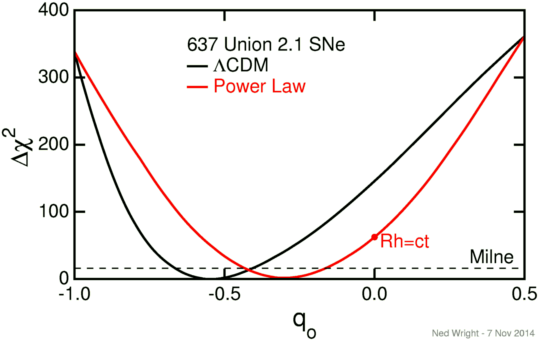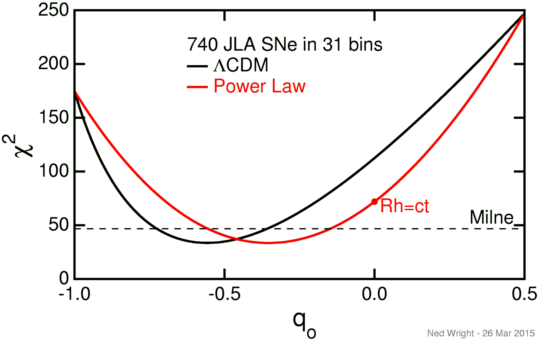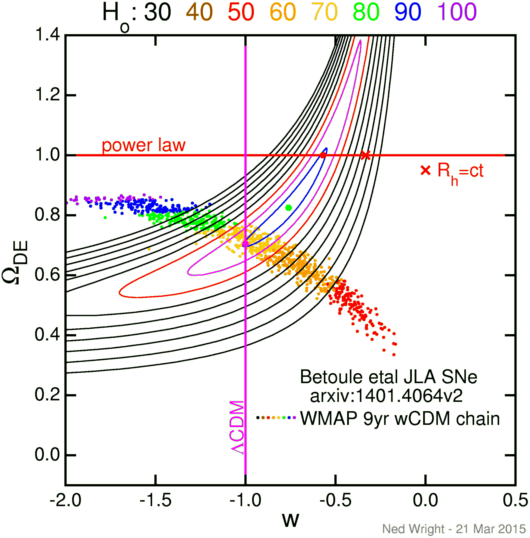
Many authors get taken up with the idea that a power law for the scale factor versus time
a(t) = (t/to)ngives a good fit to the supernova data in a flat Universe. If n > 1 this is an accelerating Universe and thus can give a not bad fit. The luminosity distance vs. redshift for this model is
DL(z) = (c/Ho)(1+z)[(1+z)1-1/n-1]/(1-1/n)and it gives the goodness of fits shown in the graph below:

qo = Ωm/2-Ωv = 1.5*Ωm - 1while for power law models
qo = (1-n)/nNote that the Einstein-de Sitter model is in both families (n = 2/3, Ωm = 1, qo = 0.5) as is the de Sitter model (n = infinity, Ωm = 0, qo = -1).
A later supernova dataset (JLA with 740 SNe) gives much the same picture as shown in the figure below:

A problem with the accelerating power law models is that they completely destroy the agreement between the CMB angular power spectrum and the observations. The time of last scattering is much too late, so the acoustic scale is too long. For example, if n = 5/4, then z = 1089 occurs at 50 Myr instead of 0.4 Myr so the acoustic scale is off by a factor of 125. This is illustrated below with a plot of the dark energy fraction ΩDE vs. the equation of state w for flat wCDM models.

Finally, the current model independent estimates for the age of the Universe and the Hubble constant actually give Ho to close to 1 while the power law model wants Ho to = n which is too high for models that come close to fitting the supernova data. The weighted mean age is to = 12.94 +/- 0.75 Gyr while the Hubble constant is 72 +/- 4 km/sec/Mpc using a weighted mean of 73 +/- 4(stat) +/- 5(sys) from Riess et al. (2005) and 71 +/- 5 from Wright (2007). These values give Ho to = 0.95 +/- 0.08 which excludes the n = 1.25 model by more than 3σ.
Tutorial:
Part 1 |
Part 2 |
Part 3 |
Part 4
FAQ |
Age |
Distances |
Bibliography |
Relativity
© 2009-2015 Edward L. Wright. Last modified 26 Mar 2015